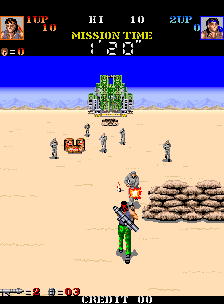
Jack is dubbed 'Jack the Giant-Killer' for this feat and receives not only the giant's wealth, but a sword and belt to commemorate the event.Ī man-eating giant named Blunderbore vows vengeance for Cormoran's death and carries Jack off to an enchanted castle. Jack encounters a livestock-eating giant called Cormoran ( Cornish: 'The Giant of the Sea' SWF: Kowr-Mor-An) and lures him to his death in a pit trap. The tale is set during the reign of King Arthur and tells of a young Cornish farmer's son named Jack who is not only strong but so clever he easily confounds the learned with his penetrating wit.

1711, and reprinted in 'The Classic Fairy Tales' by Iona and Peter Opie in 1974. 1760 by John Cotton and Joshua Eddowes, which in its turn was based on a chapbook ca. This plot summary is based on a text published ca. The film made extensive use of stop motion in the manner of Ray Harryhausen. In 1962, a feature-length film based on the tale was released starring Kerwin Mathews.

Henry Fielding, John Newbery, Samuel Johnson, Boswell, and William Cowper were familiar with the tale. One scholar speculates the public had grown weary of King Arthur and Jack was created to fill the role. Jack's story did not appear in print until 1711. Jack and his tale are rarely referenced in English literature prior to the eighteenth century (there is an allusion to Jack the Giant Killer in Shakespeare's King Lear, where in Act 3, one character, Edgar, in his feigned madness, cries, "Fie, foh, and fum,/ I smell the blood of a British man"). Jack's belt is similar to the belt in " The Valiant Little Tailor", and his magical sword, shoes, cap, and cloak are similar to those owned by Tom Thumb or those found in Welsh and Norse mythology. Some parallels to elements and incidents in Norse mythology have been detected in the tale, and the trappings of Jack's last adventure with the Giant Galigantus suggest parallels with French and Breton fairy tales such as Bluebeard. Giants are prominent in Cornish folklore, Breton mythology and Welsh Bardic lore. The tale is characterised by violence, gore and blood-letting. 1898." Jack the Giant Killer" is a Cornish fairy tale and legend about a young adult who slays a number of bad giants during King Arthur's reign.

Then he cut off his head and brought it home to the village, and the peasants were so pleased to see Cormoran dead, that they clubbed together and bought Jack a sword, on which was written in gold letters:Īnd after that they gave him the name of “Jack the Giant Killer,” and so he is always called. he struck the giant a heavy blow on his head with the pole-axe and killed him. Now Jack determined to put a stop to this, so. He was eighteen feet high, and when he was very hungry he would walk down into the village, pick up a man in each hand, and carry them off to broil for his breakfast. Posted in Artwork From Old Books For Children, Jack The Giant Killer Tagged Animal, Anthropomorphism, Architecture, Art, Castle, Deer, Fairy Tale, Gazelle, Giant, Illustration, Kill, Magic, Music, Princess, Sister, Trumpet 2 Comments Jack the Giant Killer!Ĭlose by there was a huge castle, which belonged to a giant called Cormoran. Here he found the enchanter and cut off his head with his sharp sword, and as he did so, the deer and the gazelle turned into two beautiful sisters. When these two saw Jack they fawned on him, and followed him till he came to a small study. Last of all came a beautiful gazelle and a young deer.

All were Princes and Princesses who had been changed into animals by the enchanter Galligantua. The griffins fell down dead, and then helter-skelter through the great hall rushed a group of terrified animals. “That will I do,” said Jack, and he blew a tremendous blast that made the castle walls shake. And as the door was guarded by two ferocious griffins, Jack put on his coat of darkness and marched through without the least fear, for of course the griffins could not see him and when he got inside he saw an enormous horn, upon which was written: “Whoever can this trumpet blow, shall cause the giant’s overthrow.” at last they arrived at the abode of the enchanter Galligantua.


 0 kommentar(er)
0 kommentar(er)
